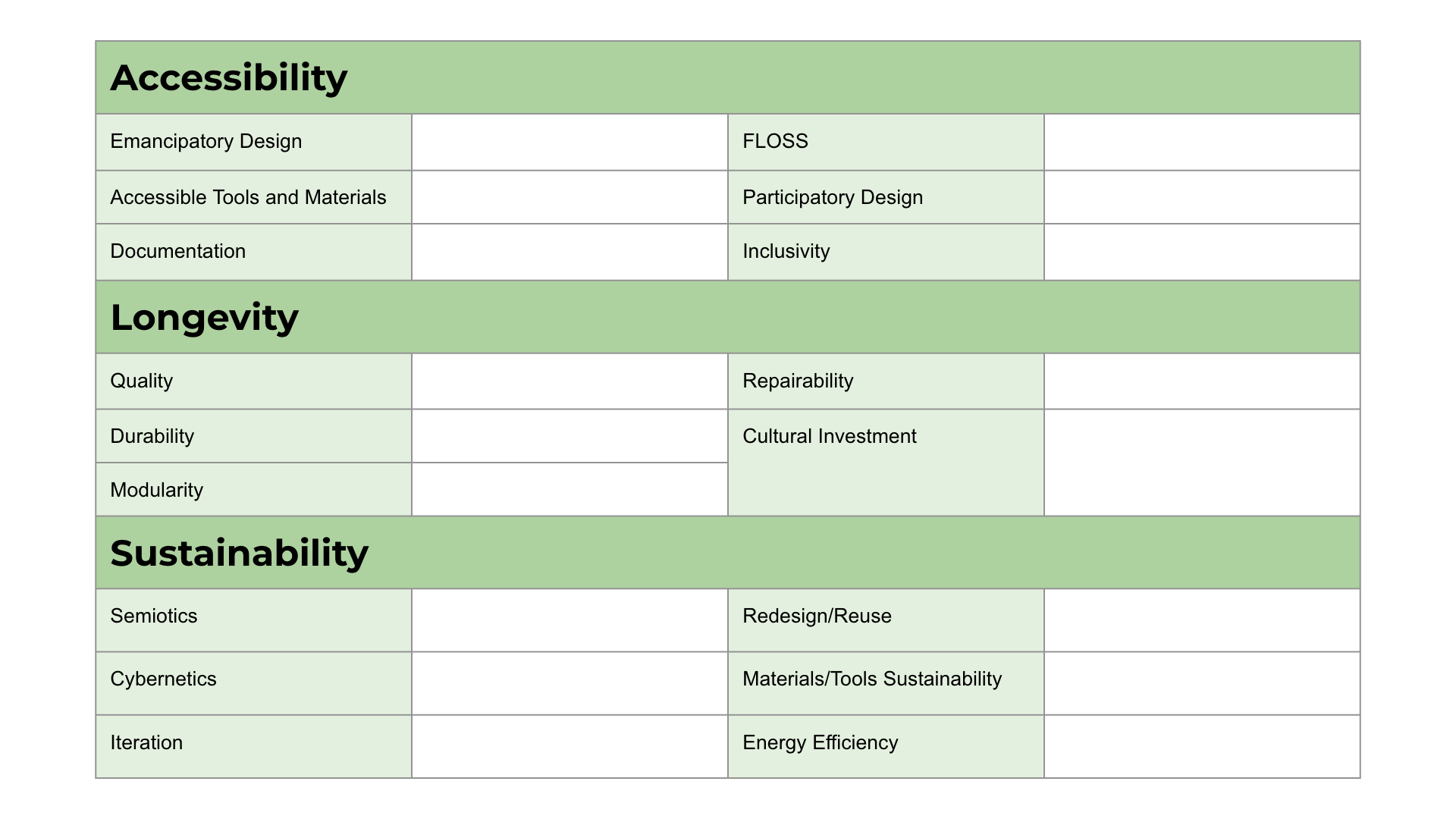Frankenfender
Introduction
In recent years I have become increasingly aware of the ethical questions surrounding the technological landscape and my role within it as a creator. Specifically, I have recognized the environmental impacts of instrument production and the urgent need for responsible practices in the community. As I work on being more sustainable in my daily life, it feels natural to bring these practices into my research. In my thesis I have established a framework that aims to illuminate pathways for the creation of digital musical instruments that prioritizes sutainability and accesibility. The framework and subsequent case study, Frankenfender, not only exemplifies innovative design, but also reflects a broader cultural shift toward valuing reusability and inclusivity within the digital luthier community.
The Ecofeminist Digital Luthier Framework
The Ecofeminist Digital Luthier Framework serves as a guide for integrating ecofeminist principles into the design and development of DMIs. Drawing from an array of sustainability frameworks emerging within the NIME community as well as important ecofeminist principles, this framework is constructed upon three foundational pillars: Accessibility, Longevity, and Sustainability. These pillars were designed to be deeply intertwined and to encapsulate various outlooks on making sustainable DMIs. By interrogating existing practices of digital lutherie, this framework not only amplifies the importance of sustainability in music technology but also addresses critical sociocultural factors that influence its adoption

By weaving these three pillars together, the Ecofeminist Digital Luthier Framework presents a comprehensive approach to fostering sustainable practices within the realm of digital music technology. In doing so, it paves the way for a more inclusive and sustainable future in music creation and interaction. Lets deep dive into each of the pillars and their concept to get a better understanding of how we can implement it into our practice.
Acessibility
This pillar emphasizes the necessity of designing DMIs that are inclusive and accessible to a diverse audience regardless of socio-economic status, physical abilities, or geographic location. Accessibility promotes the right of all individuals to engage with and benefit from music technology, helping to create more equitable innovations. It fosters community engagement and open dialogue, ensuring that the design process incorporates diverse perspectives. Here are the main objectives in enforcing this pillar
- Emancipatory Design - Discourages “disabling design”, advocates for actively addressing differing capabilities
- Accessible Tools and Materials - Using tools and design techniques easily accessible to all and encouraging more inclusivity in makerspaces
- Documentation - Proper documentation promotes knowledge sharing and replication
- FLOSS - Using Free/Libre and Open Source Software for democratization
- Participatory Design - Incorporating diverse input in design, enhancing DMIs through shared knowledge and collective experiences
- Inclusivity - highlighting the need for community engagement with diverse capabilities and perspectives
Longevity
The Longevity pillar focuses on fostering the durability and lifespan of digital instruments by advocating for designs that resist obsolescence and promote repairability. This pillar highlights the significance of considering the entire lifecycle of a product, encouraging practices that minimize waste and extend the useful life of DMIs. The aim is to cultivate a culture that values sustained use and maintenance over consumption-driven obsolescence.
- Quality - Importance of craftsmanship and reliability for sustaining use, thereby reducing abandonment
- Durability - Able to withstand sustained use to avoid disposal, thereby supporting longevity
- Modularity - Allows for flexibility and upgrades, fostering collaborative exploration and sustainability
- Repairability - Promotes design that facilitates maintenance and embrace a culture of continual usability
- Cultural Investment - Embedding community values in design to foster a commitment to longevity over novelty
Sustainability
Sustainability integrates ecological responsibility with social equity in DMI design, prioritizing sustainable materials and practices that minimize environmental impact while also ensuring authentic communication of the sustainability in our designs.
- Semiotic Sustainability - authentic communication of sustainability through materials and design, fostering genuine engagement
-
Sustainability Cybernetics - Embrace of circular process encouraging intentional design choices
- Reuse - Advocates for remanufacturing and reuse of materials
- Redesign and Iteration - Iterative design processes that allow ongoing development rather than fixed products
- Sustainable Materials and Tools - Careful selection of materials and production methods to minimize environmental impact
- Minimizing Waste - Minimizing waste during the creation process
- Energy Efficiency - Energy efficiency during and after the design process

The Frankenfender
By using the table associated with this framework we can evaluate the sustainability of digital musical instruments. The FrankenFender case study exemplifies key topics outlined in the Ecofeminist Digital Luthier Framework. By referring to the framework diagram throughout by creation practice, I actively began looking for opportunities to achieve many goals, aiming to accomplish as much as I could through these ideas.
The FrankenFender’s modular design enhances accessibility by allowing users to customize the instrument, making it suitable for a diverse range of skill levels. Built from discarded materials, it redefines “usable” instruments, inviting participation from those typically excluded from traditional music-making.
In terms of longevity, FrankenFender combats planned obsolescence by repurposing components that would otherwise go to landfills. Its sturdy construction allows for reconfiguration and easy repairs, promoting a culture of maintenance over waste.
For sustainability, the FrankenFender exemplifies ecological responsibility by using salvaged materials, aligning with ecofeminist principles. The project highlights the concept of “zombie media,” reusing discarded electronics to extend their lifecycle and reduce ecological footprints through low-impact components and sustainable practices.
Conclusions
In summary, the Ecofeminist Digital Luthier Framework offers an exciting way to rethink how we create digital musical instruments, focusing on accessibility, longevity, and sustainability. The FrankenFender case study showcases these ideas in action, highlighting how we can make music technology more inclusive and eco-friendly. By adopting these principles, we not only encourage innovative design but also spark a cultural shift towards valuing reuse and community involvement. This approach can lead us to a brighter, more sustainable future in music creation that everyone can be a part of.
